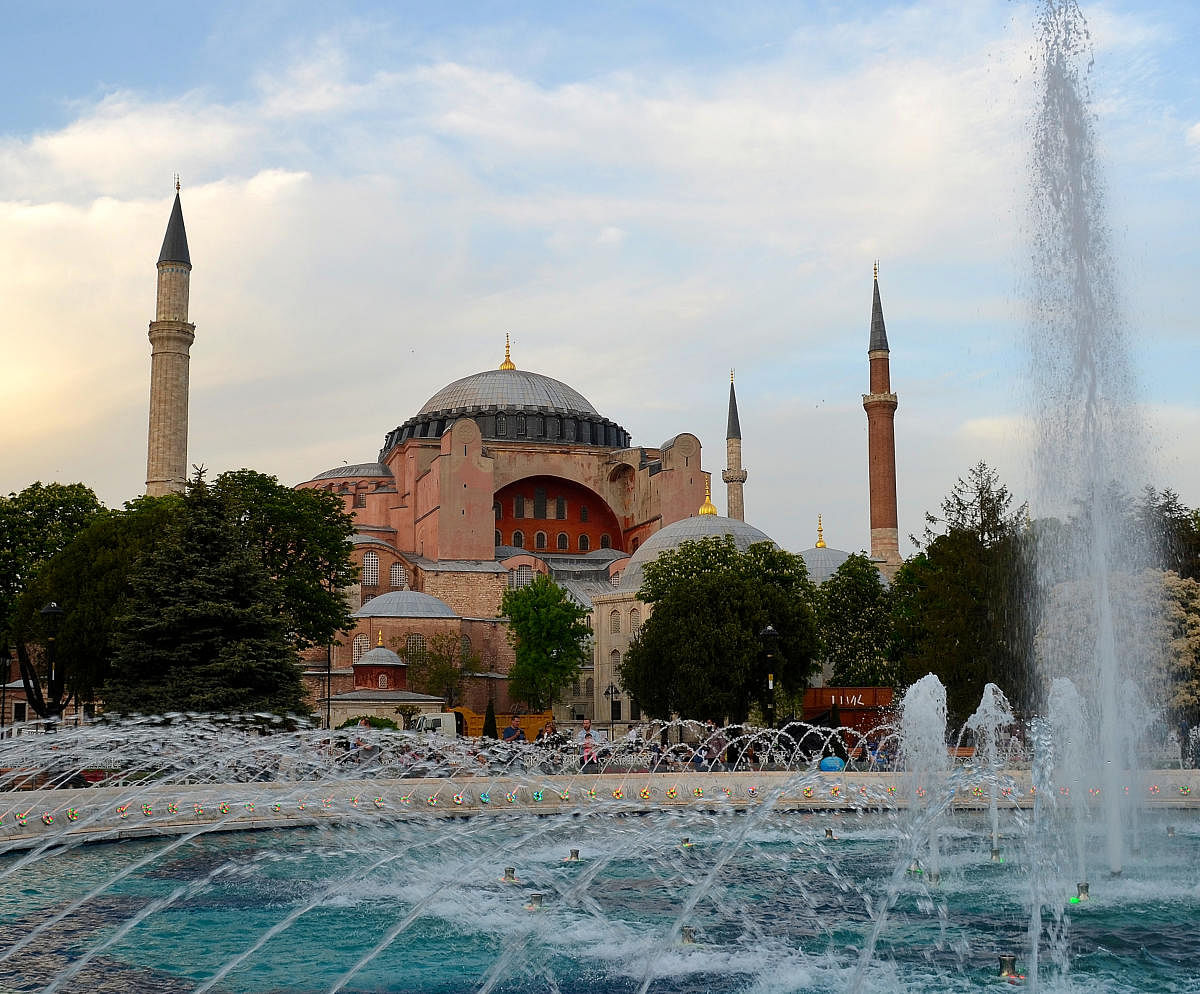
This is not about any Turkish delight. If anything, it can be called Turkish discontent. I prefer Turkish churn. All these, over Hagia Sophia. Not that this churn has started now. Far from it. The latest twirl is almost a historical rhyming of the past of this 6th century Byzantine marvel which stands stoic in Istanbul at the European side of the neck where the sleek Bosphorus hands over the thread of Black Sea to the Sea of Marmara. The world over is divided, this time, over the third major conversion of Hagia Sophia.
To make matters straight in as simple a way as possible: Hagia Sophia was built by Emperor Justinian 1 in 537 AD as a church, the largest in the Eastern Roman Empire — popularly known as the Byzantine Empire. Istanbul was then known as Constantinople. The first major conversion of Hagia Sophia took place, from that
of a church to a mosque, when in 1453 the Ottoman Turks captured Constantinople.
The vast and mighty Ottoman Empire fell with the end of World War 1 in the early 20th century. Turkey emerged as a modern Republic in its current avatar under the stewardship of the modernist Kemal Atatürk who shaped the country as a progressive nation more in the image of the Western World.
Hagia Sophia remained closed from 1931 and then reopened in 1935, this time, after its second conversion, from that of a mosque to a secular museum. All these have now changed again, with the third conversion in July 2020, back to a mosque.
A mute motif
But this isn’t a July 2020 affair. Nor is it about Hagia Sophia, which is just a mute motif, a reluctant accomplice to the political rumblings in Turkey. When the Blue Mosque (Sultan Ahmed Mosque) came up in 1616 just beside Hagia Sophia, giving a run for money to its older compatriot in both size and looks, Hagia Sophia had to share much of its singular popularity with it and henceforth both of them remain the markers of Istanbul’s skyline. But as I said, this isn’t a July 2020 affair. The grumbles were breeding for long.
On a visit to Istanbul a couple of years ago, during an easy-going conversation over a cosy dinner with locals, unease with the shifting sands of political primacies of Ankara, capital of Turkey, tumbled out. “What is happening now, more of religion, is not so good,” said Çiçek, the young lady who runs her own boutique. Nods of affirmation came from the others. A crack in the dam and murmurs grew aloud around the table. Ömer, a tech-professional added his concern about the growing engagements of the government into matters of religion as a diversion from economic well-being.
“They are even thinking of converting Hagia Sophia back to a mosque,” he said, then added, “matters are in the court for over a decade now, and the present government seems impatient to get it through.” Prophetic as it may sound today, this is not a making of a moment’s dictate. Its pointers can be found through the passage of 15 to 20 years, if not since 1935 when Hagia Sophia emerged as a secular museum.
That was in Istanbul, the Turkish showpiece to the outer world. Konya, the most religious among all the cities in Turkey in the Anatolian heartland was another story. Ahmet, the guide, had just shown me the tomb of Shams of Tabriz, and I debated with him its authenticity, as two other places in the world — Khoy in Iran and Multan in Pakistan — also vie for the same honour: that of the resting place of the person who was the friend-philosopher-guide of the great saint-poet Rumi. But Ahmet’s beliefs were not to be shaken. The conversation veered to Hagia Sophia.
The debate is on
“It should never have been made a museum,” said Ahmet with unquestioning finality. “Church or mosque, house of God,” he continued, “making it a museum is taking it away from God.”
It had stunned me then. I never knew a counterpoint to Turkey’s former president Mustafa Kemal Atatürk’s modernism even existed in Turkey at the grass-root level. But there I was, with a man-of-the-street, in the land of Mevlana Jalaluddin Rumi, and his whirling dervishes.
Ahmet had a point to make, whether one likes it or not more so because the Chora Church, one of Istanbul’s most celebrated Byzantine buildings, has also been converted into a mosque. Now that his contention has come home, the world has suddenly awakened.
The debate over what Hagia Sophia should have been or should be is going to remain. The narrative and counter-narrative filling the air raise more questions than they promise to answer. Which way will Turkey’s society and polity move towards? Who is to decide? How should historical sites, anywhere in the world, be interpreted? Is there a universal right way to go about? How far back in history should we go digging? Let’s keep discussing...